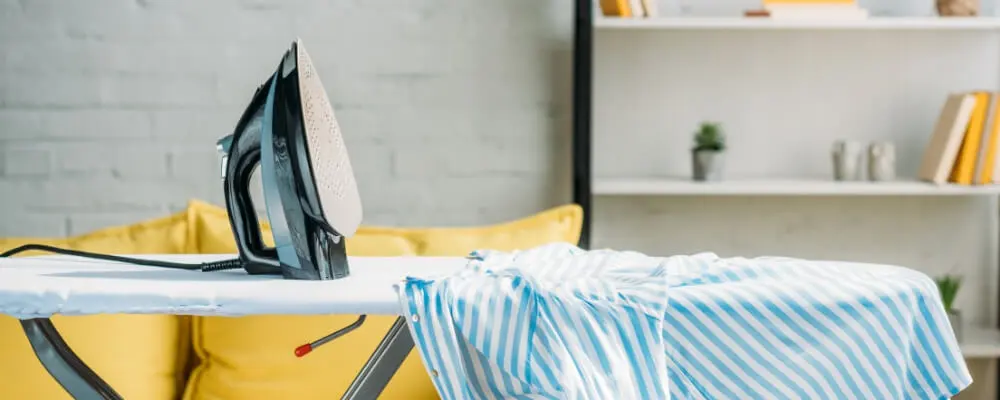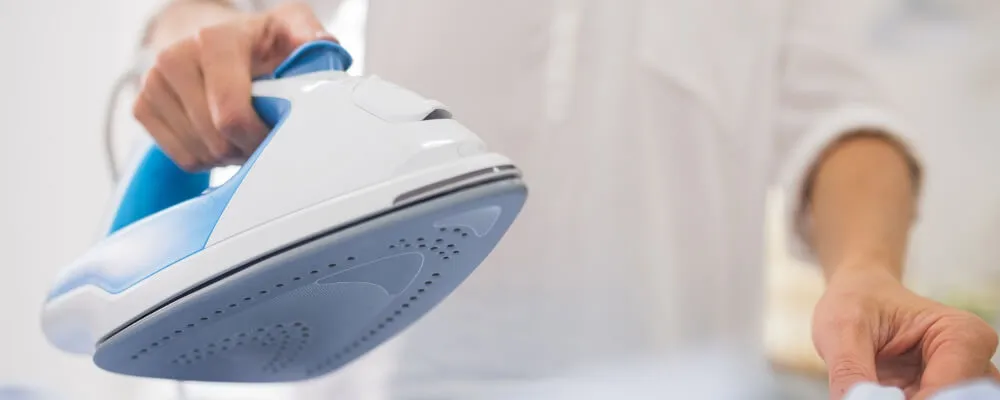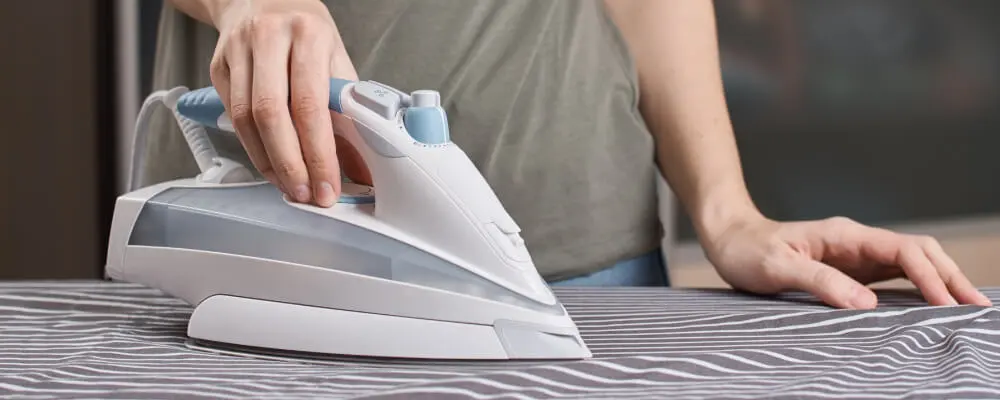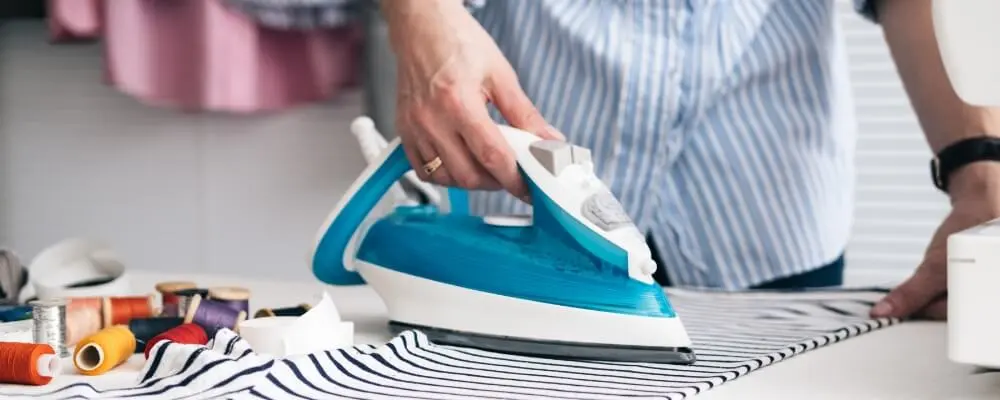Ironing clothes might seem straightforward, something many of us do without considering it. Yet, if done carelessly, this common household chore can pose significant safety hazards. From potential fire risks to personal injuries, a clothing iron, when misused, can be more dangerous than one might assume.
Being aware of safety precautions is paramount whether you’re a novice just starting out or have been ironing for years. In this blog, we present the top 15 clothing iron safety tips that everyone should be familiar with, ensuring not only crisp, wrinkle-free clothes but also a safe ironing experience. Dive in to make your daily ironing routine safer and more efficient!
15 Clothing Iron Safety Tips Everyone Should Know
Using a clothing iron safely is crucial to avoid burns, fires, or damage to your garments. Here are some clothing iron safety tips to ensure you use the appliance safely and effectively:

1. Read the Manual
The user manual is provided for a reason: it contains essential information about the safe and efficient use of your iron. Iron models might come with distinct features, buttons, and operational nuances. Familiarizing yourself with the instructions will ensure you use the product as intended and prevent unintentional damage or safety hazards. In addition, some irons might have specific care instructions, such as how to clean them or the type of water to be used. Reading and understanding the manual keeps you informed and safe.
2. Check the Cord
The power cord is a crucial component of the iron, transmitting electricity from the socket to the device. Over time, cords can get damaged, twisted, or frayed from frequent use, storage habits, or accidents. Before using the iron, inspecting the cord for visible signs of wear or damage is imperative. A compromised cord can expose wires, leading to potential electrocution hazards or even sparking that could cause a fire.
3. Iron on a Stable Surface
Using an unstable or inappropriate surface for ironing can pose several risks. Not only is there the danger of the iron falling and causing injury, but there’s also the potential for fire if it comes into contact with flammable materials. A dedicated ironing board is designed to handle the heat and provide a stable platform for the ironing process. Use a hard, flat, heat-resistant surface if you don’t have one. Stability is paramount; you don’t risk the iron falling over or your clothes getting unevenly pressed.
4. Never Leave It Unattended
One of the primary rules when operating any electrical heating device is not to leave it unattended while it’s on. Even a momentary distraction can be enough for accidents to happen. If the iron were to fall or come into contact with flammable materials, a fire could quickly ensue. Also, children or pets might accidentally touch or knock over the iron. Always ensure that if you need to step away, even briefly, the iron is turned off or safely placed in its upright position.

5. Keep Away from Children and Pets
Children are naturally curious, and pets might not recognize the dangers a hot iron poses. Storing the iron in a place out of reach of children and pets is a primary safety measure. Even during its use, be vigilant to keep kids and animals at a safe distance. They might not understand the risks, and their unpredictable movements could lead to accidental burns or other injuries.
6. Handle with Care
The iron’s metal plate, or soleplate, retains heat to help press and smooth out clothes. This plate can become extremely hot even after the iron is turned off. It’s crucial never to touch this plate when the iron is hot. Instead, always hold the iron by its handle, designed to stay cool and provide a firm grip.
7. Auto-Off Feature
Technological advancements have brought about many safety features, and one of the most beneficial for irons is the auto-off function. Suppose you forget to turn off the iron or leave it face down on a garment. In that case, this feature ensures the iron will automatically switch off after a specified period of inactivity. It acts as a second defence against potential fire hazards, especially if the iron is accidentally left on. Investing in iron with this feature can bring peace of mind and an added layer of safety.
8. Avoid Water
Electric irons, like all electronic devices, and water don’t mix. Immersing an iron in water can cause severe damage to the internal components, leading to malfunction or even creating a potential electric shock hazard. Similarly, handling an iron with wet hands increases the risk of electric shock. The iron’s electrical components can become energized if they come in contact with water, turning the entire device into a conductor. It’s essential to ensure your hands are dry and avoid any scenarios where the iron might come in contact with liquids.

9. Watch the Cord
The iron cord can be a tripping hazard if left carelessly across walkways or floors. Tripping over the cord can lead to injury and pull the hot iron down, which can cause burns or start a fire. Additionally, the cord should be kept from the hot soleplate while the iron is in use. The intense heat can damage or melt the cord’s insulation, exposing the wires and creating an electric shock or fire hazard.
10. Cool Down Before Storing
After use, an iron remains hot for a significant amount of time. Storing it immediately can be a safety hazard, especially if it comes in contact with flammable materials. Moreover, placing a hot iron inside a cupboard or any confined space can cause heat to build up, leading to potential fire risks. Always let the iron cool down on a safe, heat-resistant surface, preferably upright, before storing it.
11. Water for Steam Irons
Steam irons have a built-in feature that allows them to release steam, aiding the ironing process. For this feature, these irons have a water reservoir. However, tap water often contains minerals that can accumulate inside the iron, clogging its steam vents and decreasing efficiency. Over time, this mineral build-up can also lead to iron staining clothes. Distilled or demineralized water can prevent these issues, ensuring the iron functions optimally and lasts longer.
12. Regular Maintenance
Like any appliance, an iron requires regular maintenance to operate safely and efficiently. Over time, starches, synthetic fibres, and other residues can accumulate on the soleplate, affecting its smooth glide and heat transfer. This residue can also potentially transfer to clothes, causing stains. Regularly cleaning the soleplate ensures the iron operates at its best and reduces potential fire or damage risks.

13. Ensure Adequate Ventilation
The process can produce fumes while ironing, especially when using products like starch or wrinkle releasers. Inhaling these fumes in a confined space can be harmful and cause respiratory irritation. Always ensure the room you’re ironing in is well-ventilated. Open windows or use fans to ensure a steady fresh air flow.
14. Plug Directly Into Wall Socket
Irons typically draw a significant amount of power when in use. Using an extension cord, especially one not rated for the iron’s power needs, can lead to the cord overheating and potentially starting a fire. It’s best to plug the iron directly into a wall socket. If an extension cord is necessary, ensure it’s a heavy-duty one capable of handling the iron’s power draw.
15. Turn Off After Use
One of the simplest yet most crucial safety practices is to turn off the iron immediately after use. Even if the iron has safety features like auto-off, it’s good practice to manually turn it off and unplug it. Not only does this conserve energy, but it also eliminates any chance of the iron accidentally being activated or left on, which could pose a fire risk or other dangers.
Conclusion
In conclusion, mastering the art of ironing is not just about achieving perfectly pressed garments; it’s also about prioritizing safety. The top 15 clothing iron safety tips provided in this blog offer valuable insights that can protect you, your loved ones, and your property from potential accidents and hazards. By reading the manufacturer’s manual, inspecting cords for damage, using stable surfaces, and never leaving the iron unattended, you’re taking proactive steps to reduce risks. Keeping the iron out of reach of children and pets, handling it carefully, and considering an iron with an auto-off feature further enhance safety measures.
It’s essential to use distilled or demineralized water for steam irons, conduct regular maintenance to keep the iron clean and efficient and ensure proper ventilation while ironing. Avoiding extension cords and turning off and unplugging the iron after each use become simple but crucial habits that minimize potential dangers. With these safety guidelines in mind, your ironing sessions can become more efficient and worry-free. Embracing these practices will safeguard your well-being and prolong the life of your iron, saving you time and money in the long run.
Remember, safety should never be compromised, even in mundane tasks. By incorporating these top 15 clothing iron safety tips into your routine, you can confidently conquer your ironing chores while maintaining a secure and hazard-free environment for everyone involved.





